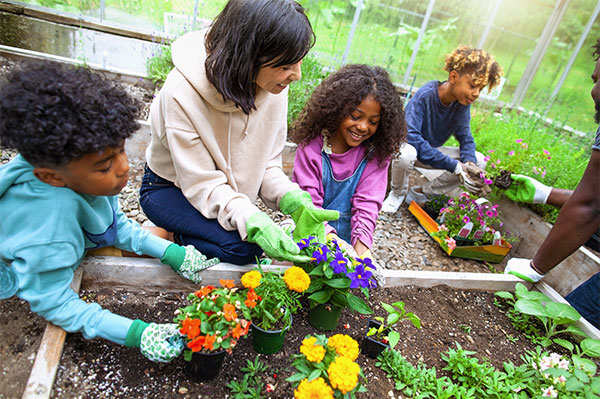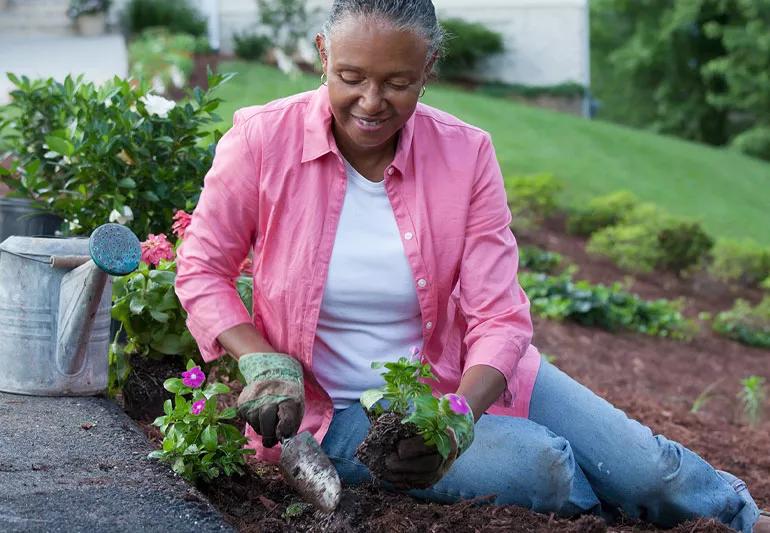Imaginative Gardening Tips for Little Rooms: Maximize Your Urban Yard
Imaginative Gardening Tips for Little Rooms: Maximize Your Urban Yard
Blog Article
Specialist Gardening Tips for Producing a Lasting and Eco-Friendly Garden
Getting started on the trip to develop a environmentally friendly and lasting yard entails a collection of deliberate selections and techniques that not just enhance the charm of your room yet likewise add positively to the environment. To discover even more skilled understandings and useful methods, allow us explore the essential components that define an eco aware garden.
Choose Indigenous Plants
Selecting indigenous plants for your garden is a fundamental action toward accomplishing sustainability. In addition, indigenous plants generally need much less water when established, contributing to more effective water usage.
Beyond their practical benefits, indigenous plants play a crucial role in supporting regional biodiversity. They supply necessary habitat and food resources for indigenous wildlife, including pollinators such as bees, birds, and butterflies. This cultivates a balanced ecological community, which is vital for the health of your garden and the surrounding environment.

Implement Water Conservation
Implementing water preservation techniques is essential for preserving a sustainable garden. Effective water usage not just lowers the environmental impact but additionally guarantees that plants get sufficient hydration without wastefulness.
In enhancement, mulching is a valuable technique for saving water. By using a layer of natural compost, such as wood chips or straw, around the base of plants, gardeners can minimize soil dissipation and maintain regular dampness levels. Compost additionally assists manage dirt temperature and suppresses weed development, additional adding to plant health and wellness.
Rainwater harvesting is an additional lasting strategy. Installing rain barrels or various other collection systems permits garden enthusiasts to capture and keep rainwater, which can later on be used during dry periods. This not just preserves municipal water but likewise gives an all-natural, chemical-free resource for irrigation.
Finally, picking drought-tolerant plant varieties can considerably reduce water needs. These plants are adjusted to grow in low-water conditions, making them optimal for green gardens. gardening tips. Implementing these water preservation methods will certainly cultivate a durable, sustainable yard
Usage Organic Horticulture Techniques

Pest monitoring in an organic yard relies upon integrated parasite administration (IPM) strategies. These include motivating helpful insects, using natural killers like lacewings and ladybugs, and applying crop rotation to disrupt pest life process. Friend growing, where specific plants are grown together to push back insects or draw in useful insects, is another reliable method.
Weed control is handled with mulching and hands-on elimination, instead than depending on herbicides. Mulch not only subdues weeds but likewise preserves moisture and improves soil wellness as it damages down. Organic mulches, such as straw, timber chips, and leaves, are particularly beneficial.
Produce Wildlife Environments
Creating wildlife habitats within your yard not just enhances biodiversity yet also sustains the community's equilibrium. Begin by including indigenous plants, as these are appropriate to your neighborhood climate and offer crucial food and sanctuary for wildlife.
Consider adding a water attribute, such as a pond or birdbath, to supply a consistent water source. Water aspects draw in a selection of types, from amphibians to pollinators, boosting the garden's vitality. In addition, mounting birdhouses, bat boxes, and insect hotels supplies secure nesting sites and motivates biodiversity.
Leave some areas of your garden undisturbed, allowing leaf trash and fallen branches to gather. By focusing on these lasting techniques, your yard can end up being a haven for regional wild animals, promoting eco-friendly wellness and sustainability.
Practice Composting and Mulching
A vital facet of you can find out more lasting gardening, composting and mulching, substantially improves dirt wellness and decreases waste. Composting involves reusing natural products such as kitchen scraps, grass cuttings, and leaves. These products disintegrate to form nutrient-rich garden compost, which works as an all-natural fertilizer. Unlike synthetic plant foods, garden compost enriches the dirt with necessary nutrients and advantageous bacteria, fostering a much healthier garden community.
Mulching, on the other hand, involves covering the dirt surface with not natural or organic products, such as straw, wood chips, or shredded fallen leaves. This technique provides a number of benefits: it preserves soil dampness, suppresses weed growth, and moderates dirt temperature level. Mulch additionally gradually breaks down, adding raw material to the soil and more improving its fertility.
To practice efficient composting, guarantee your compost heap has a balance additional hints of eco-friendly products (abundant in nitrogen) and brownish materials (abundant in carbon), preserving appropriate oygenation and moisture. gardening tips. Frequently transforming the stack increases decay. For mulching, apply a 2-3 inch layer around plants, ensuring it does not straight speak to stems or trunks to stop rot
Conclusion

Picking indigenous plants for your yard is a basic action towards accomplishing sustainability.In addition, incorporating indigenous plants can improve the aesthetic charm of your yard. These plants are adapted to flourish in low-water problems, making them optimal for eco-friendly gardens. Carrying out these water preservation approaches will certainly cultivate a durable, sustainable garden.
In final thought, developing a lasting and environment-friendly yard entails the strategic choice of native plants, the adoption of water conservation methods, and the execution of organic horticulture approaches.
Report this page